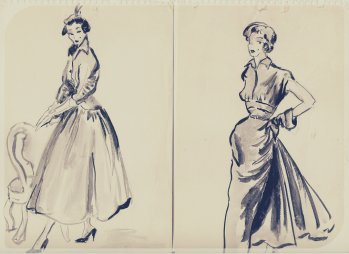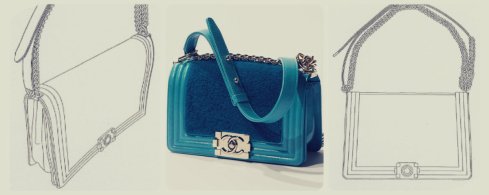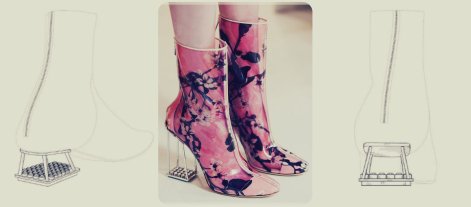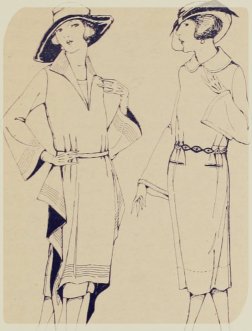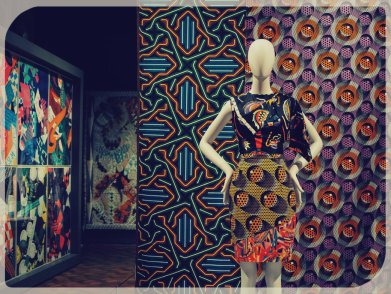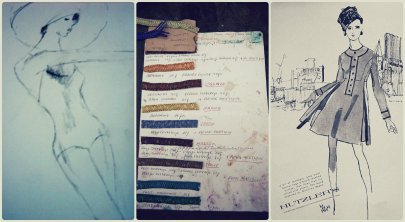With Manchester being my home city and having built my life in South East London, the past few weeks have naturally been pretty tough. However, despite the evil efforts of a minority to rock our democracy attempting to cast a shadow over our diverse, inclusive and vibrant culture, today marks what it is to live, to have a vote and to celebrate our wonderful, all-embracing and vivacious nation, where everyone has a say!
#strongtogether
So in the spirit of election day as we eagerly await the all important results, not to mention Brexit lurking around the corner and the recent inauguration of the new French president, this post looks at how politics can impact the fashion world by highlighting some potential effects of Brexit on the fashion industry.
* The images used in this post are some of the tributes that have resonated with me during recent events, which I thought would be fitting to share and which remind me of what a fantastic country we live in.
With so much uncertainty around how Brexit will pan out, not to mention our imminent anticipation of who our next prime minister will be during Brexit negotiations, it’s hard to predict what the future of the fashion industry will look like in post Brexit Britain. What is for sure is that so much uncertainty makes people nervous and can, as a result, have negative connotations…
Uncertainty nerves
Uncertainty could lower consumer confidence and diminish purchases in non-essential goods. Having said that, the likes of Harrods and other luxury stores have recently reported record sales. They have cashed in on tourist spending as a result of the weaker pound. For overseas visitors, designer goods are now at bargain prices, being cheaper here in the UK. For example, the Louis Vuitton Peedy bag is around $200 US cheaper in the UK for our American visitors than it would be if they’d bought it back home.

#wearenotafraid
Might we be faced with a new set of laws?
If we look at the law in the strictest sense, the English law governing consumer rights is the Consumer Rights Act 2015. This particular piece of legislation already implements the EU Consumer Rights Directive 2011/83/EU. These are the laws that ensure you have the opportunity to return an item if you’re unhappy with it, or where something you’ve bought is faulty you’re entitled to a full refund. It’s therefore unlikely that our rights as consumers will change drastically in the near future.
What about my trade marks?
With trade marks, many will have opted to apply for an EU Trade Mark (protecting their mark in all EU member states), over a UK Trade Mark (which only gives protection in the UK). At the time of applying, perhaps the main market traded in by the owner was the UK, but the owner wished to expand their business across Europe, hence the foresight of applying for an EUTM. What position will this person be in now we are leaving the EU, will an EUTM still have protection in the UK?

#loveforallhatredfornone
It’s a possibility that there might be a transitional system enabling EUTM holders to convert their marks to national UK marks, if EUTMs are no longer enforceable in the UK. In the meantime, there’s also a worry that if those trade mark owners hold onto their EUTM protection, there could be non use challenges if the mark has only been used in the UK in the last 5 years, so such trade mark owners may need to start thinking about using their trade mark in the rest of Europe to avoid losing protection in the 27 member states.
In addition, those who wish to oppose or challenge any EUTM applications or registrations based on unregistered earlier rights, will need to think of a new strategy if those unregistered earlier rights have only been utilised in the UK.
In the same way, registered and unregistered community design rights will no longer be applicable in the UK.

#standingtogether
Tariffs and the single market
Another issue is around goods tariffs. British based designers and retailers have moved goods around Europe at no extra cost since the EU single market began over 20 years ago. Brexit might mean this can no longer be done without those designers paying tariffs, such as import and export taxes. This impacts designers who might want to showcase collections at fashion week in Paris or Milan and retailers whose collections are made on the continent. Retailers are likely to pass these costs onto consumers. This all depends on whether the UK remains part of the single market, however there are unlikely to be immediate changes to import and export duties.
Currency affecting manufacturing costs
Currency volatility and a weaker pound could result in brands having to pay higher manufacturing costs to make their products in factories abroad, a cost which would again undoubtedly be passed onto the consumer.

#lovelondon
Even for those goods that are British made, the raw materials required to produce them are more often than not imported and purchased in foreign currency. So if exchange rates remain volatile, such higher costs will mean that British brands become more expensive for British consumers.
British fashion industry reputation and appeal
The British fashion industry has many international connections and networks. It is possible that leaving the EU could impact the aspirations of promising fashion talent. Be that through an aspiring young European designer being put off coming to the UK if obtaining a visa becomes far too much hassle, or simply fearing a less inclusive and cohesive community.

#londonisopen
What next…
To succeed, the fashion industry needs to firstly focus on maintaining and growing its international reputation through pushing and showcasing its best through London Fashion Week. Secondly, the industry needs to reassess its business models and pricing strategies to respond to challenges in the wake of a weaker pound, place less reliance on imports and perhaps focus more on attracting, retaining and developing home-grown talent.
Political round up
As I sit here typing this blog whilst half listening to exit poll bickering, I once again find myself reflecting on the events of the past few weeks. Whichever colour of the electorate rainbow your political alliance resides with today, of paramount significance to me is that those who are lucky enough to live in this democratic society made the most of their vote!

#londonbridge
By exercising our right to vote we honor our privileged ability to live in a free, tolerant and dynamic society. A society that cannot be broken and one that sparkles in its acceptance and celebration of a people made up of those from many different backgrounds, religions and cultures coming together to make our little island GREAT Britain!
Over and out
As morning breaks the party elected to go on and lead us through Brexit negotiations will become clear. Whilst a period of uncertainty will remain over how Brexit negotiations will go, clarity will follow and the UK’s position with regards to Brexit in general and also how this will impact the fashion industry will become light.

#onelove
One love!















